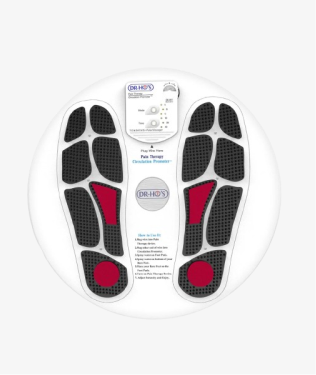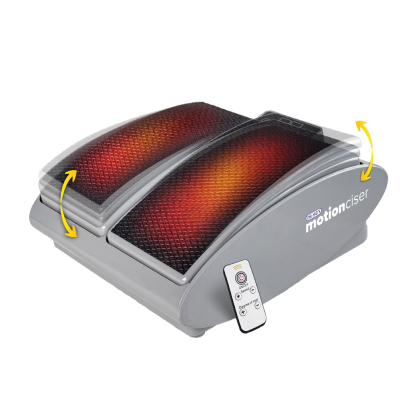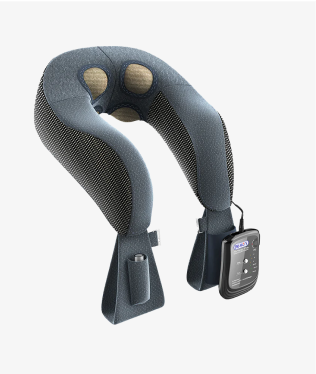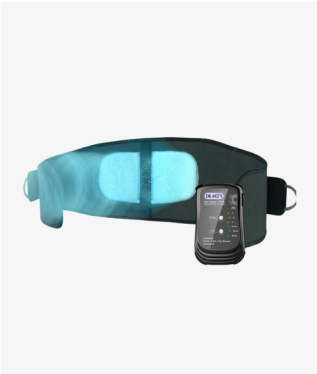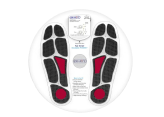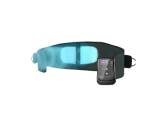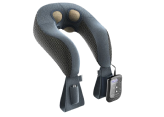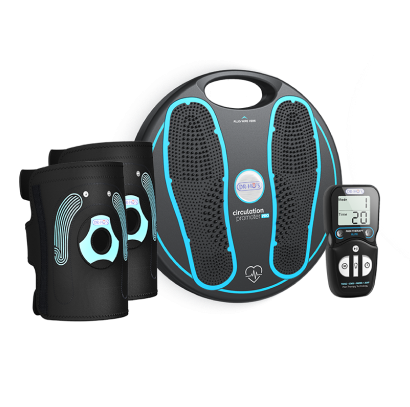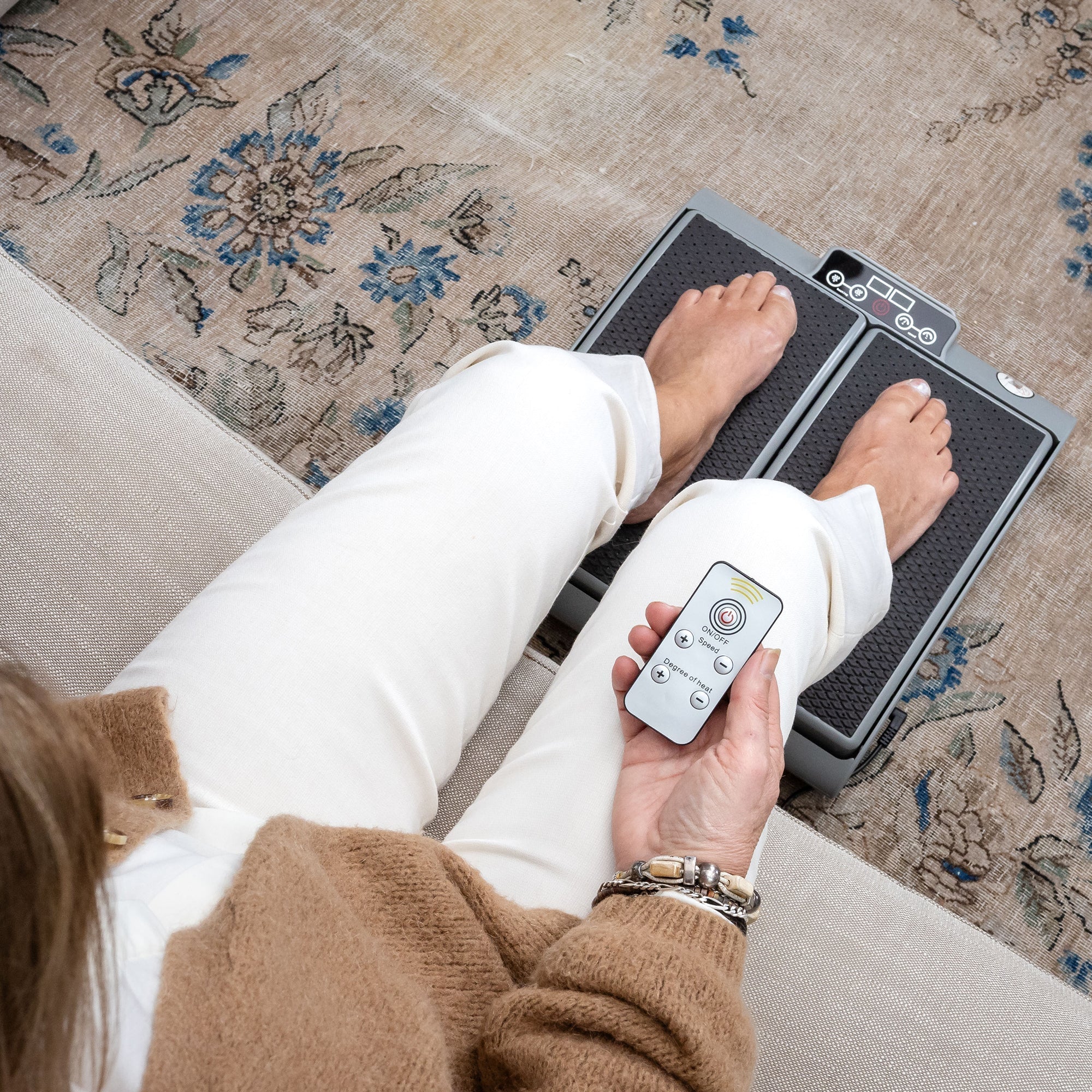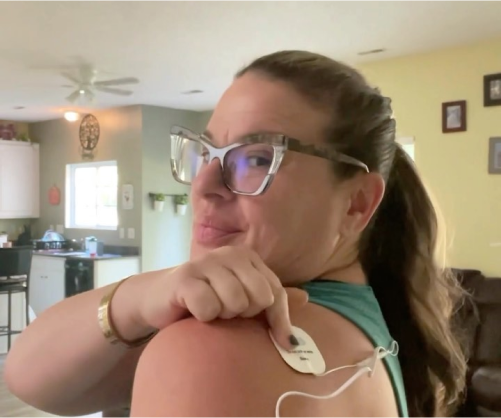When we think of “joint pain”, hip or knee pain often comes to mind first — but many experience joint pain in the upper body, too, specifically in the wrist, elbow and shoulder joints. But no matter where your joint pain is felt, it can have major implications in your daily life. This makes it all the more important to prioritize your pain management for joint relief.
While medications and procedures are often a necessary step in addressing your joint pain, there are alternative methods that joint pain sufferers can try to relieve their pain comfortably from home. Continue reading to find answers to the questions you have about wrist, elbow and shoulder joint relief and more.

Where Joint Pain Comes From
Upper body joint pain can stem from an injury or an underlying condition such as arthritis. Age, obesity, mental illness and previous injuries are also risk factors for the development of joint pain.
Here are some of the most common causes of wrist, elbow and shoulder joint pain:
- Arthritis: Arthritis causes a progressive degeneration of cartilage — a necessary tissue that allows smooth movement in the joints. Swelling, pain and restricted mobility can occur in any joint as cartilage deteriorates and bones start to rub together.
- Bursitis: Bursitis can occur in some joints including the shoulder and elbow joints. Bursae sacs surround the joints, allowing for frictionless movement; when they become irritated, often from overuse and excess pressure, they can become swollen.
- Tendinitis: Tendon pain derives from irritation and inflammation; in the wrist, these tendons are located at the base of the thumb. Tendinitis can make it difficult to make a fist or grasp objects. One can also experience tendinitis in the shoulder and elbow joints. Elbow tendinitis is often referred to as tennis or golfer’s elbow, as repeated swinging motions are often the reason for elbow tendinitis.
- Nerve disorders: Carpal tunnel syndrome is a type of nerve pain that occurs when swelling constricts the median nerve which passes through the carpal tunnel, located at the base of the hand. Similarly, you can also experience pinched nerves in the shoulder and elbow joints.
- Injuries: Injuries to the upper body joints can lead to tears, strains & sprains, fractures, dislocations and more.

How Joint Pain Can Affect Your Life
Joint pain can be so much more than just a nuisance. Being in pain can restrict your mobility, degrade your mental health and be all-around time-consuming. This can have larger implications in your life; your social life, career and hobbies can all be affected by your joint pain.
Considering this, being in pain isn’t something to simply accept as unavoidable or permanent. There are meaningful ways to find wrist, elbow or shoulder joint relief, so you can continue doing the things you love to do.
How to Manage Wrist, Elbow & Shoulder Joint Pain and Find Joint Relief
While medications and surgeries can be effective, they are not your only options for joint pain relief. We’ve outlined some alternative ways for sufferers to find wrist, elbow and shoulder joint relief on their own:
1. The P.R.I.C.E Method for Joint Pain
The P.R.I.C.E method of managing joint pain is a tried-and-true process for alleviating pain and preventing it going forward. Here is each step outlined in the acronym:

Protection
When pain strikes, it’s first recommended to immobilize the area with a brace or wrap (to prevent further injury). An arm sling or a wrist brace would be appropriate for upper limb joint pain.
Rest
The next step in the protocol is rest. Not only does this include getting high quality, restorative sleep, but it means refraining from any activities and motions that aggravate the pain, including certain errands, sports and heavy lifting.
Ice
When you’re ready to treat the pain, it’s recommended to use ice first. Cold therapy can help minimize the swelling, redness and inflammation that contributes to joint pain. Protect the skin and only apply ice for 10-15 minutes at a time.
Compression
To find some support and minimize swelling, use a compression wrap on the affected area. Apply a medium amount of tension when wrapping the area; you should not experience numbness or tingling. Loosen or remove the wrap before bed and reapply it in the morning.
Elevation
When it comes to joint inflammation and swelling, elevation is important. Raising the affected area over the heart can keep fluid from building in the area which could lead to more discomfort.
2. TENS Therapy for Joint Pain
A TENS Therapy device can be a meaningful addition to your pain management routine while dealing with wrist, elbow or shoulder joint pain.
Not familiar with TENS? Here’s a breakdown of what it is and how it works:
TENS (Transcutaneous Electrical Nerve Stimulation) is a safe, non-invasive type of temporary pain therapy and relief that you can find in DR-HO'S TENS devices. It uses safe and gentle electrical stimulation conducted through electrodes placed on the body. This stimulation floods the nervous system, disrupting and reducing the normal flow of pain signals to the brain. TENS is also thought to help release endorphins in the body, which is a naturally occurring chemical that helps the body relieve pain.

Some TENS devices are also equipped with EMS (Electrical Muscle Stimulation). This type of pain-relieving technology stimulates muscles, causing them to contract and relax in order to increase local circulation and soothe soreness. Stimulating healthy muscles also helps to improve and facilitate muscle performance. Even while not dealing with muscle pain, the addition of EMS makes for relaxing, massage-like stimulation.
There is so much more to TENS, EMS and DR-HO’S proprietary technology AMP (auto-modulating pulse). Learn more about how TENS can provide relaxing, pain-relieving stimulation for wrist, elbow and shoulder joint pain:
- How to choose the right TENS machine for you
- How to use a TENS machine
- How to place your DR-HO'S Body Pads
3. Yoga & Meditation for Joint Pain
Yoga and meditation can be beneficial in one’s pain management routine for a purpose that’s more than just physical. A yoga and meditation practice can be a way for you to make time for yourself regularly and relax both your body and mind when pain flares.

Yoga in particular can help elbow or shoulder joint pain sufferers stay active safely and possibly become more flexible. Start with the Thread the Needle pose to stretch and mobilize the shoulder joint.
Step 1: Get down on your hands and knees on a mat. Keep the knees and hands shoulder-width apart.
Step 2: Start by slowly inhaling and raising your right hand in a stretch above your head.
Step 3: Slowly exhale as you bring your arm back down and thread it under your body. As you go under your body with your arm, thread it behind your left arm and slowly lower your right cheek to the mat. You should feel a stretch in your upper arm and shoulder.
Step 4: Come back to all fours. Repeat the same motion on the other side.
Make yoga and meditation a part of your regular routine to keep the joints loose, mobile and flexible, and to stay relaxed when pain strikes.
Time you put into feeling better is time well-spent.
We hope that this guide to wrist, elbow and shoulder joint pain has inspired you to prioritize your pain management routine. Find long-lasting, healthy habits that help you find joint relief and start feeling more like yourself again!


